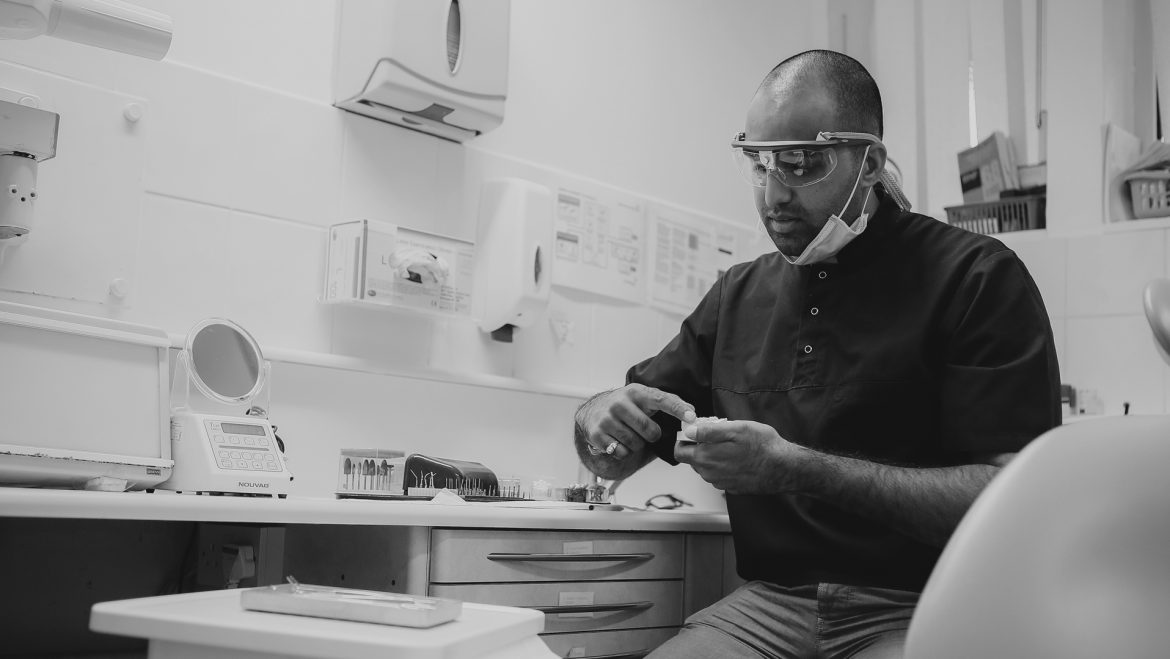What is gingivitis? What causes gingivitis?
Gingivitis means inflammation of the gums (gingiva). It commonly occurs because of films of bacteria that accumulate on the teeth – plaque; this type is called plaque-induced gingivitis. Gingivitis is a non-destructive type of periodontal disease. If left untreated, gingivitis can progress to periodontitis, which is more serious and can eventually lead to loss of teeth.
A patient with gingivitis will have red and puffy gums, and they will most likely bleed when they brush their teeth. Generally, gingivitis resolves with good oral hygiene – longer and more frequent brushing, as well as flossing. Some people find that using an antiseptic mouthwash, alongside proper tooth brushing and flossing also helps.
In mild cases of gingivitis, patients may not even know they have it, because symptoms are mild. However, the condition should be taken seriously and addressed immediately.
What are the signs and symptoms of gingivitis?
A symptom is something the patient feels and describes, such as painful gums, while a sign is something everybody, including the doctor or nurse can see, such as swelling.
In mild cases of gingivitis there may be no discomfort or noticeable symptoms.
Signs and symptoms of gingivitis may include:
- Gums are bright red or purple
- Gums are tender, and sometimes painful to the touch
- Gums bleed easily when brushing teeth or flossing
- Halitosis (bad breath)
- Inflammation (swollen gums)
- Receding gums
- Soft gums
What are the causes of gingivitis?
The accumulation of plaque and tartar
The most common cause of gingivitis is the accumulation of bacterial plaque between and around the teeth, which triggers an immune response, which in turn can eventually lead to the destruction of gingival tissue, and eventually further complications, including the loss of teeth.
Dental plaque is a biofilm that accumulates naturally on the teeth. It is usually formed by colonizing bacteria that are trying to stick to the smooth surface of a tooth. Some experts say that they might help protect the mouth from the colonization of harmful microorganisms. However, dental plaque can also cause tooth decay, and periodontal problems such as gingivitis and chronic periodontitis.
When plaque is not removed adequately, it causes an accumulation of calculus (tartar – it has a yellow color) at the base of the teeth, near the gums. Calculus is harder to remove, and can only be removed professionally.
Plaque and tartar eventually irritate the gums.
Gingivitis may also have other causes, including:
- Changes in hormones – which may occur during puberty, menopause, the menstrual cycle and pregnancy. The gingiva may become more sensitive, raising the risk of inflammation.
- Some diseases – such as cancer, diabetes, and HIV are linked to a higher risk of developing gingivitis.
- Drugs – oral health may be affected by some medications, especially if saliva flow is reduced. Dilantin (anticonvulsant), and some anti-angina medications may also cause abnormal growth of gum tissue.
- Smoking – regular smokers more commonly develop gingivitis compared to non-smokers.
- Family history – experts say that people whose parent(s) has/had gingivitis, have a higher risk of developing it themselves.
What are the treatment options for gingivitis?
If the patient is diagnosed early on, and treatment is prompt and proper, gingivitis can be successfully reversed.
Treatment involves care by a dental professional, and follow-up procedures carried out by the patient at home.
Gingivitis care with a dental professional:
- Plaque and tartar are removed. This is known as scaling. Some patients may find scaling uncomfortable, especially if tartar build-up is extensive, or the gums are very sensitive.
- The dental professional explains to the patient the importance of oral hygiene, and how to effectively brush his/her teeth, as well as flossing
- Periodically following-up on the patient, with further cleaning if necessary
- Fixing teeth so that oral hygiene can be done effectively. Some dental problems, such as crooked teeth, badly fitted crowns or bridges, may make it harder to properly remove plaque and tartar (they may also irritate the gums).
What the patient can do at home:
- Brush your teeth at least twice a day
- Bear in mind that in most cases, electric toothbrushes do a better job than we can do on our own
- Floss your teeth at least once a day
- Regularly rinse your mouth with an antiseptic mouthwash. Ask your dentist to recommend one.


